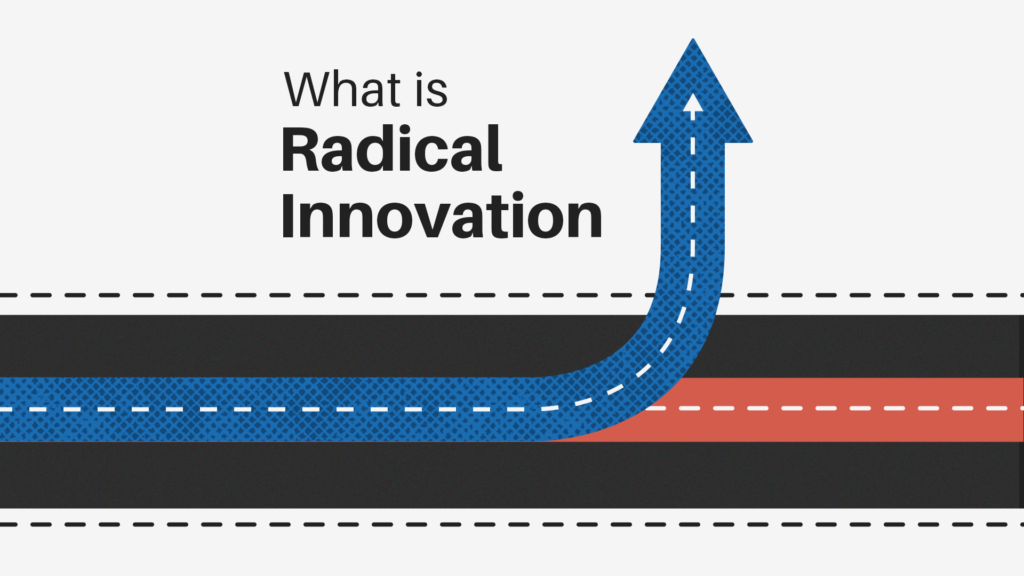Innovation is the lifeblood of growth. Over the years, we’ve seen the rise of the internet; how smartphones replaced cameras, calculators, and calendars; how digital wallets like GCash promote financial inclusivity; and even the undeniable convenience of ride-hailing apps like Grab and Uber.
As uncertain as the future is, it’s quite safe to say that adapting to change is crucial in today’s day and age. It is high time that businesses start focusing on creating an innovation mindset, to leverage radical innovation as a means to further a vision for the future.
The difference between disruptive and radical innovation
Daniel Newman, a Forbes correspondent, wrote that “…radical innovation impacts the industry, for the better, placing technology as the priority and focusing on long-term goals. Disruptive innovation starts when a small company begins in the smaller market, focusing on short-term success, thriving on low-end market encroachment.”
In other words, radical innovation refers to creating an entirely new value network for a certain market.
Look at Apple, the mastermind behind the world’s most innovative tech products. They create products with the future in mind. Back when the iPhone was first released in 2007, it was difficult to fathom how a cell phone could be used for more than just taking calls. It was radical, a crazy idea.
But doesn’t every new idea seem crazy at first?
On the flip side of the same coin – or should we say, phone – disruptive innovation improves upon existing ideas, exceeds the current consumer base, and eventually displaces the old market.
This usually occurs not through innovative technology alone but in combination with business model innovations. Consider the case of Blockbuster, a DVD rental company, that went broke because of the disruptive innovation of Netflix. Blockbuster failed to keep up with the times.
How does a company radically innovate?
So how exactly can a company become radical? How can you rock the boat – shake up an entire industry – without falling to your demise? Let’s break down the process into a few steps:
- Focus on talent, creativity, and communication among employees. The iPhone didn’t invent itself nor did Netflix reach the level of success it has today because of a one-man team. For every innovative product, an idea came first – may that be from a team member who pitched a proposal during a creative session, a far-fetched idea you had in the shower, or a random concoction of ingredients (like Frito Lay’s Flamin’ Hot Cheetos). Your employees are more than just workers heads down hustling on their desks. They’re dreamers, creative thinkers, and risk-takers. Focus on their fresh and innovative ideas that can possibly change your industry; office equipment upgrades and an increase in the R&D budget can wait.
- Learn from failure. Oftentimes, good ideas fail to cross the bridge between innovation and production. And that’s okay. No matter how many product managers, sticky notes, or miniature models you have, you need to accept that trial and error is an indispensable part of the innovation process – in fact, new ideas can be born out of failure. As Thomas Edison, the inventor of the light bulb, puts it, “Innovation is 1% inspiration and 99% perspiration.” In the same vein, he actually made 10,000 unsuccessful attempts at creating the light bulb and said, “I have not failed 10,000 times—I’ve successfully found 10,000 ways that will not work.”
- Explore various types of technology. If you want to stay relevant, you have to make modern technology an integral part of your innovation process. Embracing digital transformation entails ditching old processes and legacy systems in order to be adaptive and responsive to quickly changing market dynamics.
Success Pattern
There’s one pattern the majority of successful innovation projects have in common, as detailed by Zühlke’s whitepaper:
Step 1: There was someone who had a counterintuitive mindset and thus came up with a crazy vision that they want to turn into a reality.
Step 2: A C-Level executive believes in the vision and makes the necessary arrangements such as the allocation of financial and human resources.
Step 3: A core team is created. 2 to 5 people, who have the same North Star, establish the necessary culture and kick things off.
Instead of going through abstract brainstorming sessions – asking redundant questions like customer pain points and market gaps – you should start reframing them to “What does success look like to you?” You’ll then have more ideas that revolve around success rather than failure.
Set your radical innovation idea up for success
Nothing beats experience. Foster a culture of innovation. You have to be too stubborn to give up.
But also remember that, in radical innovation, you aren’t just scaling a product or a business – you’re turning a market upside down. To achieve this, a thorough plan that lays out your strategies, available opportunities, and realistic expectations is needed.
Only then can you start turning promising ideas into reality.
Embiggen is ready to co-build your industry-disrupting ideas. Schedule a FREE strategy session with our team here.

